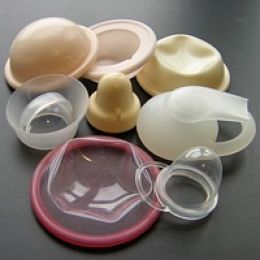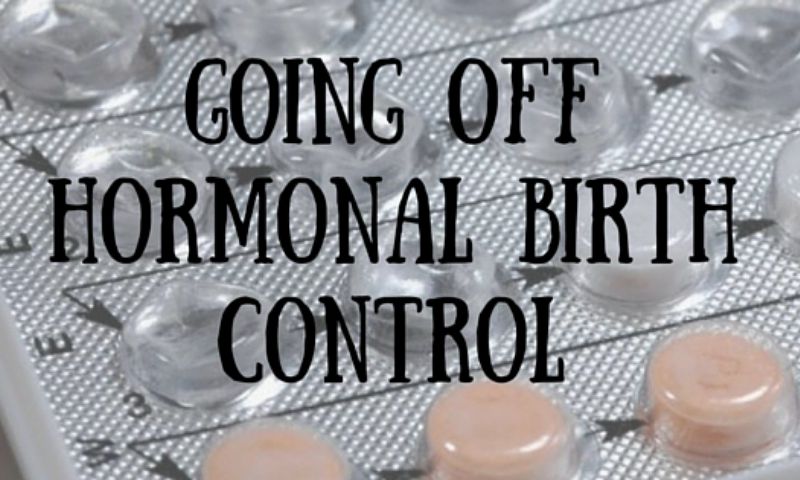The pros and cons of all barrier methods of contraception
Condoms are the one and only way to avoid STDs, but once you’re past the dating stage of your life and in a fully committed long term relationship, they can become something on an obstacle to your sex life. Many people – women and men – tolerate condoms, but would rather not have to use them. It might be the feel, the look, the logistics of putting them on, the smell, the latex, the expense, or the waste that bothers you, but often we can’t wait to move on from them.
Not using condoms in a long term relationship can convey trust, closeness, intimacy or just make sex better. While condoms don’t have to be downer (there are so many brands out there now, you’re sure to find one that suits you both), it’s understandable that women and men might like to use them less
When you use the Daysy fertility monitor, you can go without condoms for 65% of the month, on average. This leaves just 35% of the month that you do need to use a condom if you have sex. To put it another way – that’s very close to two thirds of the month that you don’t need to use condoms, leaving just one third left when you do need to keep them on hand. Daysy allows you to cut back on your condom use significantly and enjoy many more days of condom-free sex. Just 9-10 days out of the whole month, instead of every single time you have sex.
Daysy calculates and indicates your fertile days and those are the days you’ll need a barrier method if you want to have PIV (penis-in-vagina) sex. With an average cycle you should have a fertile window of approximately 9-10 days. On these fertile days (when you will receive a red light from Daysy), you will need to use a barrier contraceptive if you have sex.
Condoms are just one of the barrier methods you can choose from, although amongst Daysies (Daysy users) they are the most popular.
75% of women using Daysy are currently preventing pregnancy. When you’re fertile you need to use a barrier contraceptive to avoid pregnancy. Daysy indicates your fertility with a red light on the days you are able to get pregnant. The rest of your cycle you will have green lights, which indicate that you are not able to get pregnant.
In this post we’ll compare and contrast the pros and cons of the different barrier contraceptives available. These barrier methods are options for you to use on your fertile or red light days.
Condoms (male)
Pros: Condoms (male or female) are the only way to prevent the transmission of STDs (sexually transmitted diseases). So, they are an absolute necessity in most new relationships. There are many different kinds of condoms these days – vegan, sustainable, super-thin, colored, hexagonal (look it up), made from latex, sheerlon, or polyisoprene, meaning you have a lot of brands to choose from and can try out a few until you find one you both like. Condoms are easy and simple to use, most of us are taught how in high school. Condoms are also the only barrier method for men. If you like the idea of shared responsibility for avoiding pregnancy, then you might like that your partner has to take on the responsibility of choosing, purchasing, and using condoms while you’re responsible for using Daysy. Male condoms are the most effective barrier method and can be used in conjunction with a separate spermicide for increased effectiveness overall.
Cons: As said in the introduction, you or your partner may not like how condoms feel and they may impact your enjoyment of sex. If you have a latex allergy, your options are limited. Female and male condoms are the only barrier method that physically provide a barrier at almost every point of touch, which can make them feel more obtrusive.
Diaphragm
Pros: With the arrival of the new Caya diaphragm, a one-size-fits-all option with design updates to make it easier to insert and remove, the diaphragm is an increasingly popular barrier option. The Caya doesn’t require a fitting with a doctor and is designed to fit “most” women. A Caya can be purchased online direct, or you can get a prescription from your doctor and pick it up from a pharmacy. You cannot feel the diaphragm once it’s fitted against your cervix and you can wear is comfortably for up to two hours prior to when you plan to have sex. Unlike condoms, your partner should not notice you’re wearing a diaphragm. Caya is used with a natural, chemical-free spermicide – CayaGel. The diaphragm might feel like a less obtrusive barrier option that can allow for more spontaneity, not interrupt sex, and not change your enjoyment in any way. The Caya is made from silicone, whereas other older diaphragms are made from latex.
Cons: The Caya diaphragm with spermicide is not as effective as the male condom for preventing pregnancy. It needs to be kept in for 6 hours after use to be effective, but can only be kept in up to 24 hours total due on a slight risk of Toxic Shock Syndrome. Inserting anything inside the vagina can increase chance of irritations and infections. If you opt for an older diaphragm then you will need to be fitted by your doctor as they come in different sizes depending on the woman’s anatomy and lifestage.
Spermicide
Pros: Spermicide is used in conjunction with barriers to increase effectiveness. Spermicides are easy to purchase, inexpensive, simple to use, and add another layer of protection, literally, to your contraceptive plan. They can be used alone, but this is not a very effective method of contraception.
Cons: Most of the spermicides on the market contain chemicals that can cause irritations like a burning sensation or itching. They can make urinary tract infections and yeast infections more likely. There’s only one spermicide on the market that is completely natural and will not have this effect – Contragel (the same gel that comes with the Caya). Contragel can be purchased easily online on Amazon and elsewhere. You need to apply all spermicides immediately before sex for them to be effective.
Female condom
Pros: The female condom, or FC2, was recently redesigned to look and feel better. The female condom prevents the transmission of STDs. It is made from polyurethane and not latex like most male condoms. The female condom can be inserted up to 6 hours before sex, but most people choose to insert just a few minutes before. Some women say that the design of the female condom increases their enjoyment of sex.
Cons: The female condom is harder to find and can be more expensive than the male condom. Insertion might be tricky, and you must be careful to remove slowly to avoid ripping or emptying the contents. As with male condoms, there is a complete barrier between you and your partner on all touching skin surfaces, which may impair enjoyment. Female condoms also have a tendency to make noise when in use, because of the excess material.
Cervical cap
Pros: The cervical cap (or the FemCap) is available in the US, in three sizes, and requires a prescription. A FemCap can stay in for up to 48 hours. It is made of silicone, not latex, and should fit to your cervix by suction, possibly allowing for more comfort than the diaphragm. Your partner will not feel the cap during sex.
Cons: We don’t hear about cervical caps so much anymore and few doctors or healthcare practitioners know about the option or how to perform a cervical cap fitting. Cervical caps are small and can be dislodged during sex more easily than a diaphragm. You need to use additional spermicide with a cervical cap, like Contragel. It can be tricky to insert, remove, and as with anything inserted into the vagina, can increase chance of irritation and infection. Cervical caps require a prescription and it can be difficult to find a doctor who understands the option and is willing to help with a fitting. As with the diaphragm there’s a risk of Toxic Shock Syndrome, so you need to remember to remove it.
Sponge
Pros: The Today sponge is easily and cheaply purchased from your local drugstore. It’s made of plastic foam and contains regular, chemical spermicide. You can insert the sponge prior to sex and keep it in for up to 30 hours. Your partner should not be able to feel the sponge during sex, and neither should you.
Cons: Insertion and removal of the sponge might be tricky, and with all barriers but the condoms, using it can increase your risk of vaginal irritation and infection, including Toxic Shock Syndrome. The spermicide is chemical-based, not natural, and this can cause irritation, increase likelihood of infection, as well as the transmission of STDs, as it can cause tears in the vaginal wall.
Holly Grigg-Spall is a fertility awareness and body literacy advocate and educator, a Daysy enthusiast, and excited to help more women come off the birth control pill and find a natural, effective alternative. holly.grigg-spall@valley-electronics.com
Photo courtesy of Lady Comp and jayativoria.com












